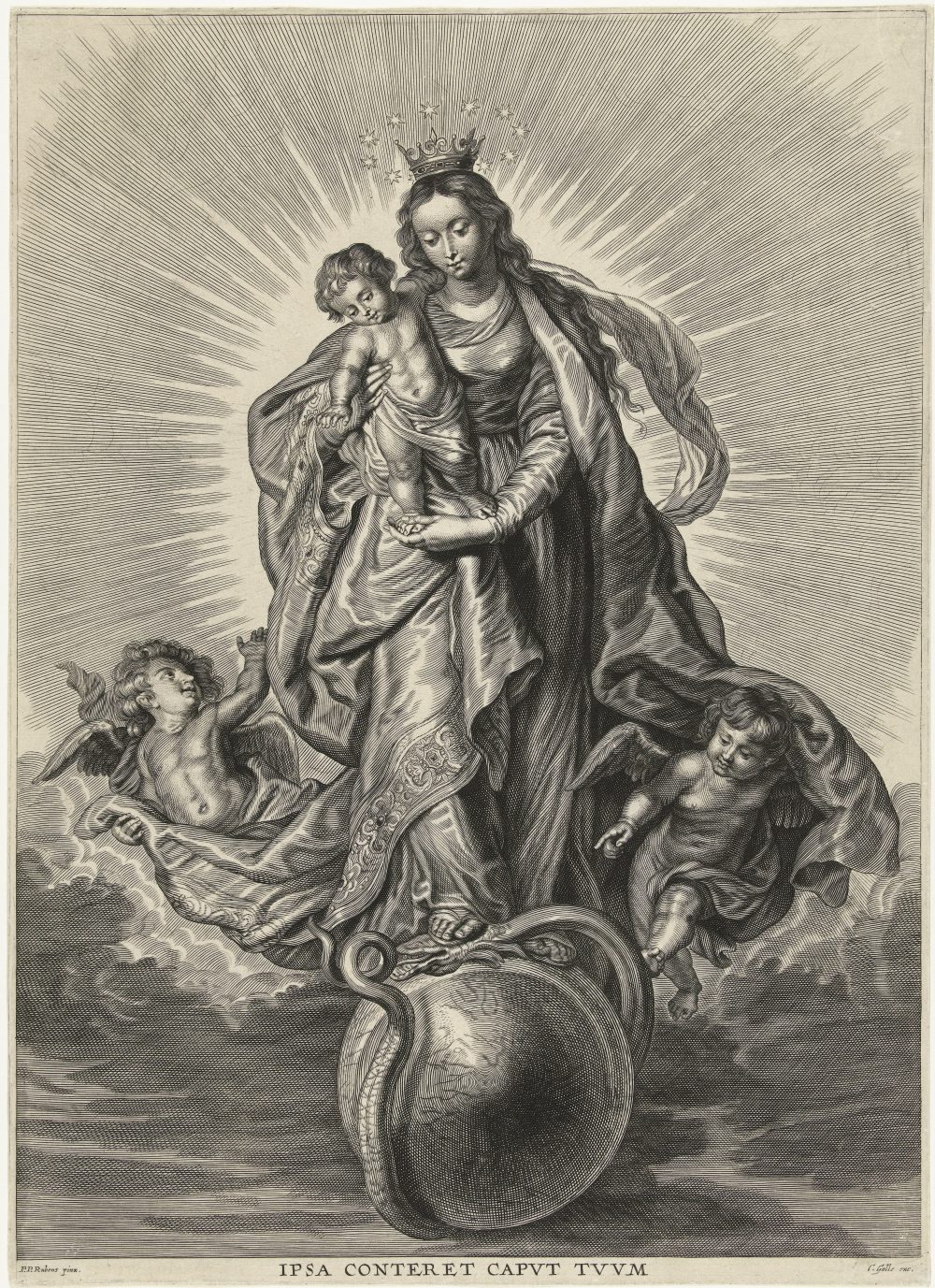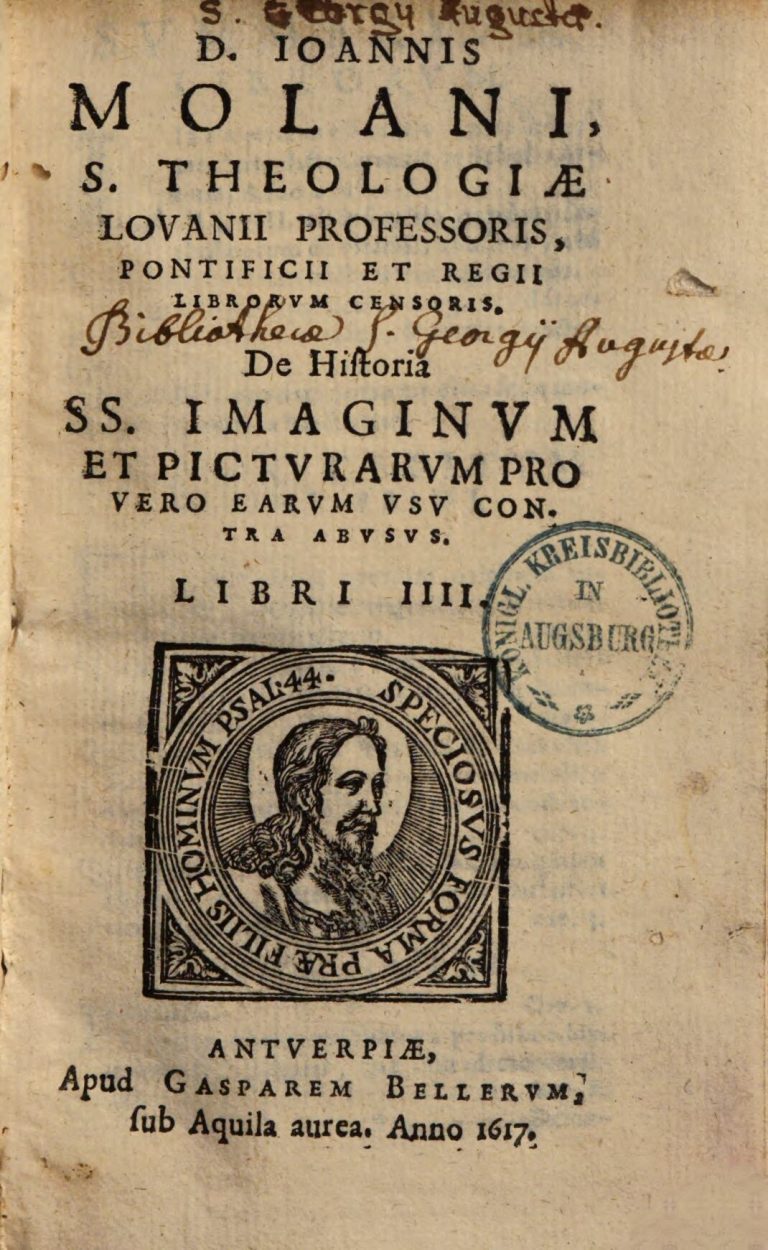
Rijksmuseum Amsterdam, http://hdl.handle.net/10934/RM0001.COLLECT.84506
In book 2, ch. 18, Molanus gives several examples of iconographic traditions of his time which, according to him, are suitable for the decoration of churches. He does not so much regard them from an esthetical point of view and neither from a mere iconographical point of view, instead his main point of interest is how well-established the stories are on which they are based. This is in line with the argument he first discusses in this chapter.
The first example he gives is that of Mother Mary trambling the Devil with her feet, which would depict that she was free of sin both dead and during her lifetime and that she has always been a virgin. This dogma was confirmed during the Council of Trent in the sixth session.
“Among these images was also present a painting of our Lady, mother of God always Virgin, in which she trambles the devil with her feet. This painting means that the blessed Virgin, for her greatest glory, has overcome the devil. In effect, for a special privilege from God, she has lived her whole life without any sin, both mortal and venial, which the Church has declared during the Holy Council of Trent.”
“Huc pertinet Deiparae virginis et Dominae nostrae pictura, qua exprimitur diabolum habens sub pedibus. Qua significatur beatissimam Virginem maxima gloria diabolumm vicisse. Omnem enim vitam suam speciali Dei privilegio duxit immunem ab omni peccato, non modo mortali, sed etiam veniali: id quod Ecclesiam sentire declarat sacrosancta Synodus Tridentina.”

Molanus 1996, 174.



